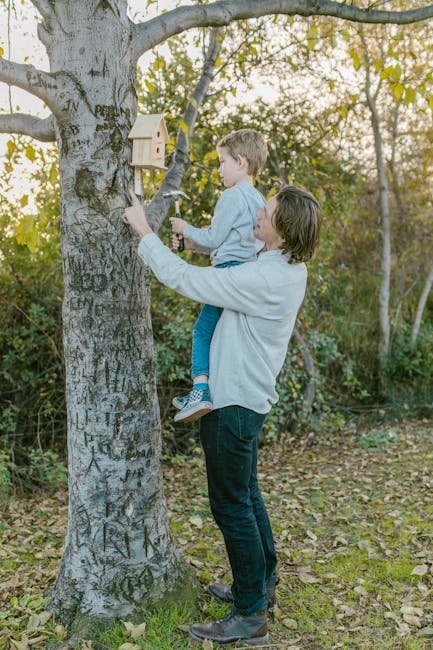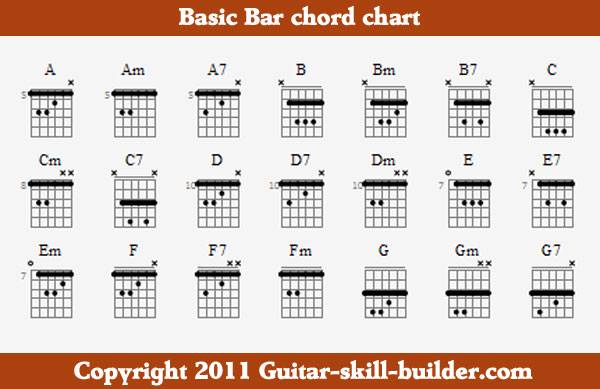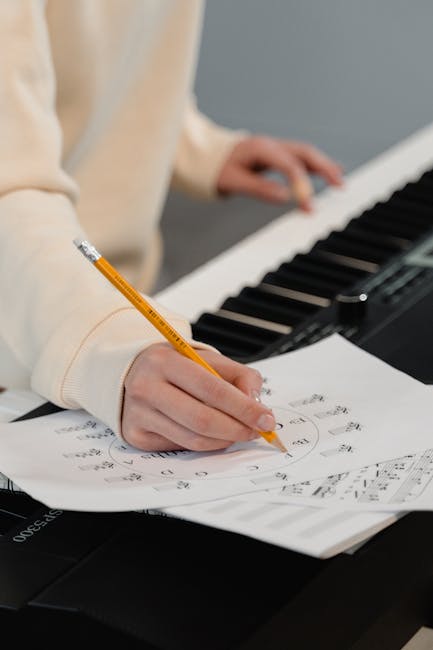So you’ve got your hands on a guitar and you’re ready to become the next rock god, but you quickly realize that mastering those pesky chords isn’t as easy as it looks. Fear not, dear aspiring guitarist, because we’re here to guide you through the tumultuous journey of chord mastery. From the painful fingertip calluses to the frustration of never quite hitting that perfect G major, we’ve all been there. So buckle up, grab your guitar pick, and get ready to evolve from chord struggler to chord conqueror in no time.
Contents
- 1 Understanding the Basics of Guitar Chord Structure
- 2 Exploring Open Chords and Their Vital Role for Beginners
- 3 Navigating Through Barre Chords: Techniques and Tips
- 4 Embracing Chord Variations and Voicings: A Gateway to Creativity
- 5 Mastering the Art of Chord Progressions in Songwriting
- 6 Incorporating Advanced Chords and Extensions into Your Play
- 7
- 8 FAQs
- 9 Rock on, Guitar Gurus!
Understanding the Basics of Guitar Chord Structure
Have you ever looked at a guitar chord chart and felt like you were staring at hieroglyphics? Fear not, my fellow guitar enthusiasts, for I am here to guide you through the mystical world of chord structure!
Let’s start with the basics – a chord is made up of three or more notes played together. These notes are derived from a specific scale, and each chord has its own unique set of notes that give it its distinct sound.
There are several types of chords, including major, minor, diminished, and augmented. Each type has its own formula for determining which notes to include, but don’t worry – you don’t need a math degree to figure it out!
When you see a chord symbol like C major or G minor, it’s referring to the root note of the chord (in this case, C or G) and the type of chord (major or minor). The other notes in the chord are determined by the formula for that specific type of chord. So grab your guitar, strum a few chords, and start unraveling the secrets of chord structure!
Exploring Open Chords and Their Vital Role for Beginners
So you’ve decided to pick up the guitar and dive into the world of music! Congratulations! One of the first things you’ll encounter on your musical journey are open chords. These are the foundational chords that will help you strum along to your favorite tunes and impress all your friends at parties.
Open chords are vital for beginners because they are easy to play and sound great. Plus, they are the building blocks of countless songs across various genres. By mastering open chords, you’ll be well on your way to becoming a guitar hero!
One of the coolest things about open chords is that they are versatile – they can be played in different positions and voicings to create unique sounds. Experiment with different finger placements and strumming patterns to add your own flair to classic chord progressions.
Remember, practice makes perfect! Don’t get discouraged if you struggle with a chord at first. Keep at it, and soon enough, you’ll be strumming away like a pro. So grab your guitar, tune up, and get ready to rock with those open chords!

So you’ve decided to tackle the world of barre chords, huh? Strap yourself in because this is going to be a wild ride. But fear not, brave guitarist! With a few techniques and tips up your sleeve, you’ll be navigating through barre chords like a pro in no time.
First things first, let’s talk about hand placement. When attempting a barre chord, make sure your index finger is pressing down firmly across all the strings at a specific fret. This might feel like your finger is going to fall off, but hey, no pain no gain, right? Remember to keep your thumb positioned behind the neck for support, it’s not just there to twiddle while you play. Trust me, you’ll thank me later.
Now, let’s address the elephant in the room – the dreaded buzz. If your barre chord sounds more like a swarm of angry bees, don’t panic. Check your finger placement and make sure you’re pressing down hard enough. If all else fails, try adjusting the angle of your finger slightly. It’s all about finding that sweet spot. And hey, if all else fails, just blame it on your guitar being out of tune. Works like a charm.
Lastly, practice makes perfect. Rome wasn’t built in a day, and neither was Jimi Hendrix’s incredible guitar skills. Set aside some time each day to work on your barre chords, and don’t get discouraged if it doesn’t come easily at first. Remember, every rock god started somewhere. So keep at it, keep pushing yourself, and soon enough you’ll be wowing the crowds with your mad barre chord skills.

Embracing Chord Variations and Voicings: A Gateway to Creativity
So, you’ve mastered the basic chords on the guitar or piano and you’re looking to take your musical skills to the next level, huh? Well, my friend, I’ve got just the thing for you – chord variations and voicings!
Forget about playing the same old boring chords over and over again. With chord variations, you can spice up your music and add a whole new dimension to your playing. Experiment with different fingerings, inversions, and voicings to create unique and interesting sounds that will leave your audience in awe.
Embracing chord variations and voicings is not only a gateway to creativity, but it’s also a great way to challenge yourself and push your musical boundaries. Don’t be afraid to think outside the box and try out unconventional chord shapes - you never know what kind of magic you might discover!
So, grab your instrument, get comfortable with some new chord shapes, and let your creativity run wild. Who knows, you might just stumble upon your next musical masterpiece!

Mastering the Art of Chord Progressions in Songwriting
So you’ve mastered the art of writing lyrics and catchy melodies, but now it’s time to take your songwriting game to the next level by mastering the art of chord progressions. And we’re not talking about just strumming the same old chords in the same old order – we’re talking about creating chord progressions that will make your listeners sit up and take notice.
Here’s a few tips to help you on your journey to chord progression greatness:
- Experiment with different chord inversions to create interesting harmonic movement.
- Try using unexpected chords to add tension and excitement to your songs.
- Don’t be afraid to break the rules – sometimes a little musical rebellion is just what your song needs.
Remember, the key to crafting killer chord progressions is to let your creativity run wild. Throw caution to the wind and see where your musical instincts take you. Who knows, you might just stumble upon a chord progression that will become the next big hit!
Incorporating Advanced Chords and Extensions into Your Play
When it comes to spicing up your musical compositions, incorporating advanced chords and extensions can take your play to a whole new level. Say goodbye to basic triads and hello to complex, jazzy harmonies that will impress even the most seasoned musicians.
Instead of sticking to the same old major and minor chords, venture into the world of seventh, ninth, eleventh, and thirteenth chords. These extended chords add a richness and depth to your music that will make your audience sit up and take notice.
Don’t be afraid to experiment with altered and augmented chords as well. These dissonant notes can add tension and intrigue to your compositions, creating a sense of excitement and unpredictability that will keep your listeners on their toes.
So go ahead, break out of your musical comfort zone and start . Your music will thank you for it, and your audience will be begging for an encore.
rhythm-and-strumming-patterns”>Elevating Your Performance with Dynamic Rhythm and Strumming Patterns
Are you tired of your guitar playing sounding dull and boring? Well, it’s time to spice things up with some dynamic rhythm and strumming patterns! By incorporating different rhythms and patterns into your playing, you can take your performance to a whole new level. So let’s dive in and explore some ways to elevate your playing!
First off, don’t be afraid to experiment with different strumming patterns. Switching up your strumming patterns can add excitement and flair to your playing. Try out some of these fun strumming patterns and see how they elevate your performance:
- **The Galloping Horse**: Down, down, up, down, up, down (repeat)
- **The Funky Chicken**: Up, down, up, down, down, up (repeat)
- **The Flamenco Firecracker**: Down, up, down, down, up, down (repeat)
Next, focus on incorporating dynamic rhythm changes into your playing. Playing with dynamics adds depth and emotion to your performance. Experiment with playing softly and building up to loud, powerful chords. Mix in some quick tempo changes to keep your audience on their toes. Don’t be afraid to take risks and try out new things – that’s what makes music fun!
FAQs
What are the basic guitar chords every beginner should learn?
Well, the good ol’ classics, of course! Start off with G, C, D, A, and E major chords. Once you’ve got those down, you’ll be strumming along in no time!
How can I transition between chords smoothly?
Practice, practice, practice! Pretend you’re a ninja smoothly switching from one chord to the next. Slow and steady wins the race, my friend.
When should I start incorporating barre chords into my playing?
Ah, the dreaded barre chords. Once you’ve mastered your open chords and can switch between them without breaking a sweat, then you’re ready to take on the challenge of barre chords. Good luck!
What are some advanced guitar chords I can learn to take my playing to the next level?
Get ready to impress your friends and family with jazz chords like Dm7 and F#m9. These fancy chords will have you sounding like a true guitar virtuoso in no time!
How important is finger positioning when playing chords?
Oh, extremely important! Your fingers need to be in the right place at the right time to make those chords ring out beautifully. It’s all about precision, my friend!
Any tips for mastering difficult chords that I keep struggling with?
Don’t give up! Rome wasn’t built in a day, and neither is your guitar prowess. Break down those tricky chords into smaller parts, practice them slowly, and before you know it, you’ll be playing them like a pro!
Rock on, Guitar Gurus!
Time to put those fingers to work and practice those chords like a true rockstar. Whether you’re just starting out or a seasoned player, mastering guitar chords is a never-ending journey of growth and evolution. So keep strumming, keep learning, and most importantly, keep rocking out! Who knows, maybe one day you’ll be headlining at Madison Square Garden. Until then, keep shredding that guitar, and remember – even Jimi Hendrix had to start somewhere!



